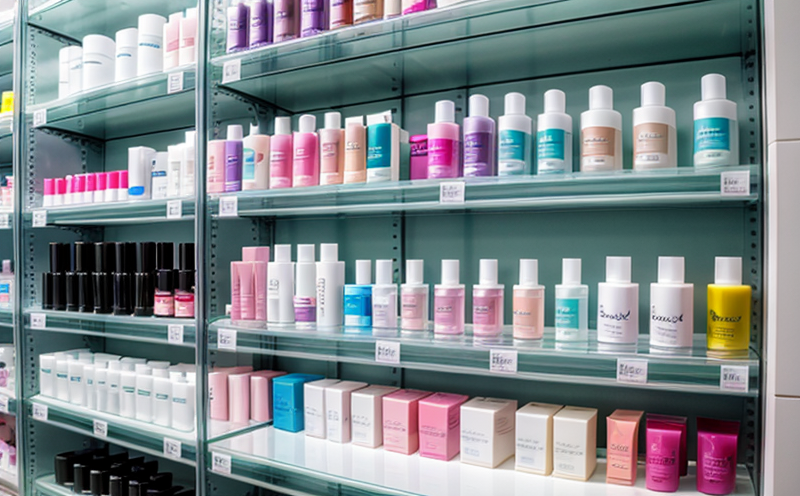Centrifuge Stability Testing for Cosmetic Emulsions
Centrifuge stability testing is a critical component of cosmetic formulation development and quality assurance. This method evaluates the physical stability of emulsions under high shear stress conditions that mimic real-world storage and transportation scenarios. The primary purpose is to assess whether an emulsion remains homogeneous during prolonged storage, ensuring consistent product quality.
The process involves subjecting a sample of cosmetic emulsion to controlled rotational forces using a centrifuge. This simulates the effects of time and handling, which can cause phase separation or sedimentation in unstable formulations. By monitoring the rate and extent of these changes, manufacturers gain valuable insights into product shelf life, enabling them to optimize formulation parameters for better performance.
Understanding the stability characteristics of cosmetic emulsions is crucial for several reasons:
- To ensure compliance with regulatory standards such as ISO 2631-1 and ASTM D976.
- To meet market demands by offering products that retain their intended appearance and efficacy over extended periods.
- To reduce the risk of consumer complaints related to product quality issues.
During centrifuge stability testing, it’s essential to follow standardized procedures to maintain accuracy and reliability. These include:
- Selecting appropriate sample sizes based on expected usage patterns.
- Ensuring the centrifuge is calibrated correctly before use.
- Maintaining consistent temperature control during testing.
The results of centrifuge stability tests provide actionable data that can inform decisions about ingredient selection, processing methods, and packaging design. For instance, if a particular emulsion shows signs of instability early in the test, adjustments might be necessary to improve its formulation.
| Parameter | Description |
|---|---|
| Rotational Speed | The speed at which the centrifuge spins, measured in revolutions per minute (RPM). |
| Duration of Centrifugation | The length of time the sample is subjected to rotational forces. |
| Initial Sample Homogeneity | A visual assessment of how well mixed the emulsion was before testing. |
| Phase Separation | The degree to which oil and water phases separate during centrifugation. |
| Sedimentation Rate | How quickly particulates settle out of the emulsion. |
| Bubble Formation | The presence and rate of bubble formation, which can indicate instability. |
Why It Matters
Centrifuge stability testing is vital for ensuring that cosmetic formulations meet both regulatory requirements and consumer expectations. Regulatory bodies like the European Union’s Cosmetics Regulation (EC) No 1223/2009 require manufacturers to demonstrate the safety and efficacy of their products, including proof of stability over time.
From a business perspective, maintaining stable emulsions enhances brand reputation by delivering consistent quality across batches. It also reduces the likelihood of product recalls due to quality issues, thereby protecting consumer trust and company image. Additionally, improved stability can lead to extended shelf life, which is particularly beneficial for products that need long-term storage or international distribution.
- Regulatory Compliance: Ensures adherence to relevant standards and guidelines.
- Consumer Satisfaction: Delivers consistent product quality, meeting customer expectations.
- Brand Reputation: Enhances trust through reliable performance.
Scope and Methodology
The scope of centrifuge stability testing encompasses a wide range of cosmetic emulsions, from lotions to mousses. The methodology involves precise sample preparation, accurate measurement, and rigorous observation under controlled conditions.
- Sample Preparation: Collect representative samples of the cosmetic product. Ensure that each sample is prepared identically for consistency.
- Calibration: Calibrate the centrifuge to ensure accurate rotational speeds and durations.
- Data Collection: Record visual observations regarding phase separation, sedimentation rates, and any other relevant phenomena.
Competitive Advantage and Market Impact
- Innovation: Offers a competitive edge by identifying potential improvements in formulation stability early on.
- Efficiency: Allows for informed decision-making regarding ingredient selection and processing methods, streamlining the product development process.





